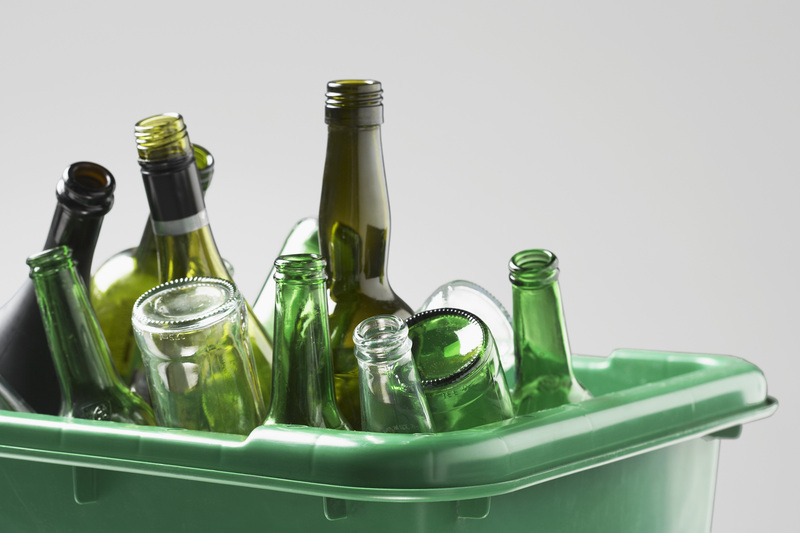Strategies to Minimize Microplastic Pollution Effects
Microplastics--tiny fragments of plastic less than 5mm in diameter--have infiltrated every corner of our planet, from ocean depths to mountaintops, and even into our food and water. Tackling the far-reaching impacts of microplastic pollution has become a pressing environmental priority. But what practical strategies to minimize microplastic pollution effects are available, and how can communities, industries, and individuals collaborate to address this silent crisis?
Understanding Microplastics and Their Widespread Effects
Before diving into mitigation tactics, it's vital to comprehend what microplastics are and why they are so harmful. Microplastics are produced both intentionally (primary microplastics, found in personal care products, industrial scrubbers, and synthetic textiles) and as breakdown products from larger plastics (secondary microplastics).
These tiny particles pose a significant threat to marine and freshwater ecosystems, as they are easily ingested by aquatic organisms, disrupt food chains, and may carry toxic chemicals. Additionally, the possible health risks to humans--ranging from ingestion through seafood to respiratory exposure--make minimizing microplastic pollution a critical goal for public health and environmental sustainability.

Comprehensive Strategies for Reducing Microplastic Pollution
Addressing the microplastic crisis requires an integrated approach involving various stakeholders and adopting multiple solutions. Below, we highlight effective microplastics reduction strategies that can help minimize the environmental and health effects of microplastics.
1. Policy Interventions and International Agreements
One of the most effective methods for minimizing microplastic pollution is the enforcement of policies at local, national, and international levels. Governmental action amplifies collective impact and ensures compliance.
- Banning or restricting single-use plastics: Policies that phase out disposable plastic bags, cutlery, and straws combat the root cause of secondary microplastics.
- Regulating microplastics in products: Many countries have banned microbeads in cosmetics and cleaning agents, eliminating a notable source of primary microplastics.
- Promoting Extended Producer Responsibility (EPR): Making manufacturers financially or physically responsible for collection, recycling, and safe disposal fosters more sustainable product design.
- International cooperation: Agreements like the Basel Convention now include certain plastic wastes, promoting responsible cross-border movement and management.
2. Technological Innovations in Waste Management
Advancements in waste management and recycling technologies can drastically cut the volume of plastics entering our environment, ultimately leading to less microplastic pollution.
- Enhanced recycling systems: Introducing smarter sorting facilities, chemical recycling, and upcycling improves the conversion of plastic waste into useful materials.
- Improved wastewater treatment: Upgrading filtration and treatment processes at sewage plants captures more microplastics before water enters rivers and oceans.
- Innovative capture devices: Devices such as river barriers, storm drain filters, and lint filters in washing machines help prevent microplastics from reaching aquatic environments.
3. Sustainable Consumption and Behavioral Changes
Consumers play a crucial role in minimizing microplastic exposure and reducing the demand for plastics that break down into microplastics.
- Opt for alternatives: Choose natural fiber clothing (like cotton or wool) over synthetic textiles to curb microfibers release during washing.
- Reduce single-use plastics: Bring reusable shopping bags, water bottles, coffee cups, and utensils to decrease plastic waste generation.
- Avoid products with microbeads: Check product ingredients for polyethylene, polypropylene, or "microbead" mentions before buying.
- Proper waste disposal: Recycle plastics correctly and avoid littering, ensuring plastics do not disintegrate and enter the environment.
4. Industry Innovations for Eco-Friendly Alternatives
Industries are developing new products, packaging, and production methods to reduce the sources and presence of microplastics.
- Biodegradable materials: Shifting to compostable bioplastics and natural alternatives helps decrease plastic pollution at source.
- Closed-loop manufacturing: Embracing circular economy models ensures plastics are reused and recycled, not discarded into the environment.
- Research into synthetic textile alternatives: Companies are developing fabrics that shed fewer microfibers or are designed to be easily trapped during washing.
5. Public Education and Awareness Campaigns
One of the most important strategies to minimize microplastic pollution effects is educating the public. Awareness spurs lifestyle changes and advocacy for stronger regulations.
- Environmental campaigns: Non-profits and local governments can run campaigns highlighting the dangers of microplastics and offering practical tips for reduction.
- Eco-labeling: Labels that clarify whether a product is microplastic-free or environmentally friendly empower better purchasing decisions.
- School programs: Education for children fosters early adoption of eco-conscious behaviors regarding plastic use.
Special Focus: Reducing Microplastics in Water Systems
Water systems--oceans, rivers, and even tap water--are hotspots for microplastic contamination. Robust, targeted actions are required to protect vital water resources.
Advanced Wastewater Treatment
A significant percentage of microplastic pollution enters water bodies through wastewater. Upgrading wastewater treatment plants with advanced filtration systems, such as membrane bioreactors, sand filters, and dissolved air flotation, can capture a remarkably higher proportion of microplastics before water is discharged into the environment.
- Retrofitting: Adding specialized microplastic filters to existing treatment plants is a cost-effective way to minimize discharge.
- Decentralized solutions: Small-scale treatment for industries and communities, especially in developing countries, provides tailored microplastic management.
Stormwater and Runoff Control
Urban and agricultural run-off can carry massive loads of plastic debris into waterways. Innovative strategies include:
- Permeable pavements: Allow water, but not plastics, to seep into the ground, reducing street-to-drain flow.
- Vegetative buffer zones: Plant-rich areas near banks filter pollutants, including microplastics, before they enter rivers.
Microplastics in the Air: Emerging Concerns and Mitigation
Research has revealed that microplastics are not just confined to land and water--they are airborne, too. This presents another route for human and animal exposure.
- Ventilation upgrades: Use HEPA filters and clean air systems in buildings to trap airborne microplastics, especially in urban areas.
- Reducing open-air burning: Avoid burning plastic waste, which releases microplastics and toxic fumes into the air.
Role of Innovation and Research
Continuous research is essential for understanding microplastics' effects and developing better methods for minimizing them. Universities, public agencies, and private companies play an important role in:
- Monitoring technology: New sensors and tracking systems allow for fine-scale detection and mapping of microplastic pollution sources and concentrations.
- Green chemistry: Innovative methods for producing plastics that degrade harmlessly or break down into non-toxic components are under development.
- Evaluating health effects: Ongoing studies inform regulatory standards and mitigation priorities based on microplastic health impacts.
Global Case Studies and Best Practices
Several countries and cities offer models of success in minimizing the effects of microplastic contamination:
- European Union: Has banned microbeads in personal care products and is targeting single-use plastics, aiming for a circular plastics economy by 2030.
- South Korea: Mandated microplastic filters on washing machines starting 2023, drastically lowering microfiber emissions.
- California, USA: Requires testing drinking water for microplastics and is investing in innovative filtering technologies for wastewater plants.
- Netherlands: Implements efficient river barriers and capture devices to intercept plastics before they reach the North Sea.

What You Can Do: Everyday Actions to Combat Microplastic Pollution
While large-scale strategies are vital, minimizing microplastic exposure and pollution is also about small, consistent actions:
- Wash clothes less frequently and with colder water: This reduces fiber shed.
- Use washing machine filters or laundry bags: Capture microfibers before they can escape.
- Support businesses with eco-friendly policies: Buy from companies committed to sustainable packaging and production.
- Advocate for local regulations: Petition for microplastic bans and improved waste management in your city or region.
- Participate in clean-up events: Community efforts help remove plastic waste before it becomes microplastic pollution.
Summary Table: Key Strategies to Reduce Microplastic Pollution Effects
| Strategy | Description | Outcome |
|---|---|---|
| Policy and Regulation | Ban or limit microplastics in products and single-use plastics | Immediate reduction in production and release |
| Technological Upgrades | Advanced filtration in wastewater, recycling systems, laundry solutions | Traps and reduces microplastics entering the environment |
| Personal Actions | Eco-friendly choices and proper disposal | Minimized individual microplastic footprint |
| Education | Awareness, labeling, and school programs | Long-term behavioral change |
| Industry Innovation | Biodegradable materials, better product design | Less plastic breaks down into microplastics |
Conclusion: Working Together for a Microplastic-Free Future
Microplastic pollution is a global environmental challenge that demands urgent attention. By combining effective policies, technological innovation, industry reform, and public awareness, we can significantly reduce the effects of microplastic pollution.
Whether you are a policymaker, industry leader, scientist, or concerned citizen, you have a part to play. Start today by adopting some of these strategies to minimize microplastic pollution effects--and encourage others to do the same--for the benefit of our planet and future generations.
Together, we can pave the way toward a cleaner, healthier, and more sustainable world--one free from the threat of microplastics.